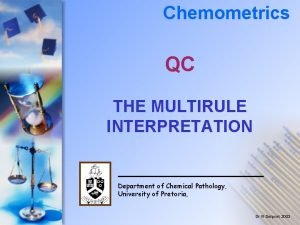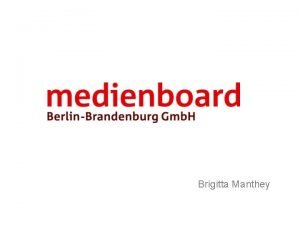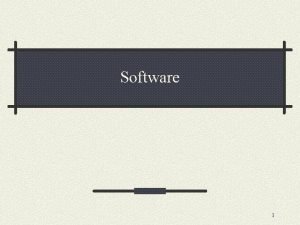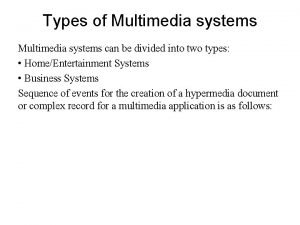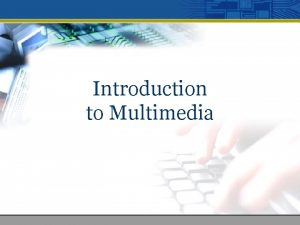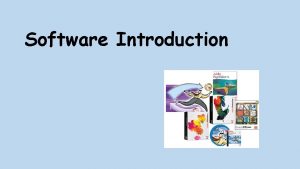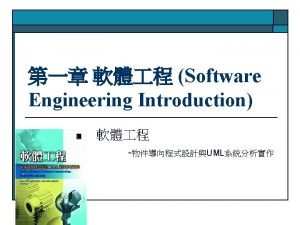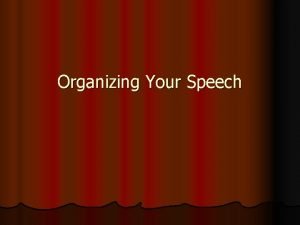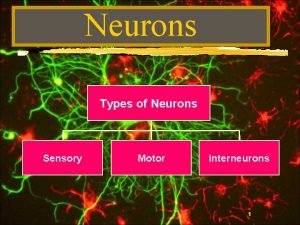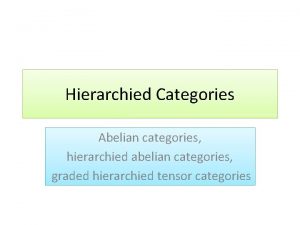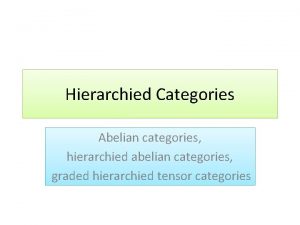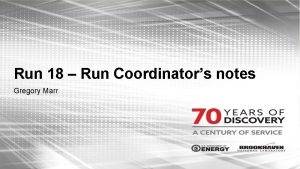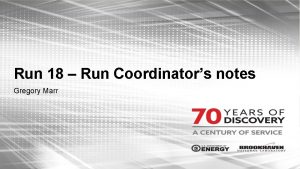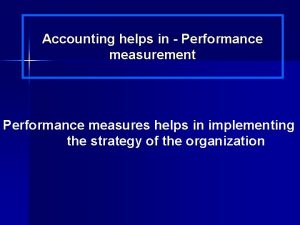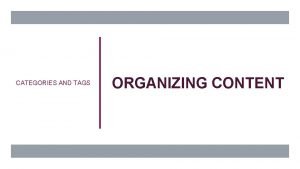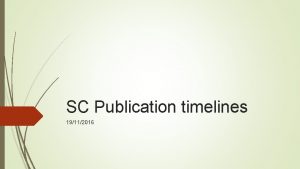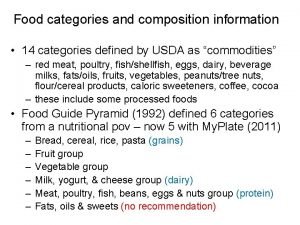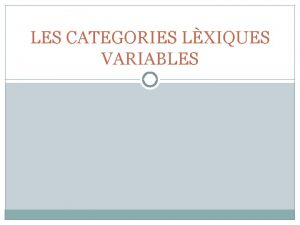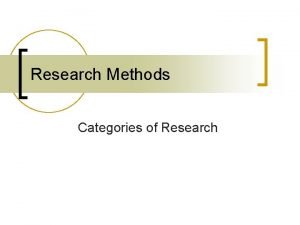Categories of Software Software System software helps run

















- Slides: 17

Categories of Software

Software • System software helps run the computer hardware and computer system. • A big part of any business application system • Software must be modified to fit a company’s specific need

Software (continued) • Business application is often a combination of many different bits of software - purchased or acquired and integrated by a company’s staff • A smaller proportion of time and effort is spent on developing systems • Instead increasingly packed applications/outsourcing is used

Outsourcing • The practice of turning over responsibility of some or all of a company’s IS applications and operations to an outside firm • Cost-effective • Used to overcome operating problems • due to inexperience

Sources of Software • • • Information Technology Firms Packaged Software Providers Vendors of Enterprise Solutions Application Service Providers Open Source Software In-House Development

Information Technology Firms • Help companies develop custom ISs for internal use • IT firms develop, host, run application for customers • Employ people who are experts in development of IS & the business area • Examples IBM, EDS, Cap. Gemini, Accenture

Packaged Software Producers • Software companies develop pre-packaged or off-theshelf systems • Many market segments are served • Some off-the-shelf software systems cannot be modified to meet the specific individual needs of a firm (turnkey systems) • Changes are only made if a specific number of users request the change • Some off-the shelf software can be modified/extended • Can meet 70% if the firm’s needs • Examples: Microsoft’s Project

Enterprise Solutions • Also known as Enterprise Resource Planning systems • Complete software solutions for a company • ERP systems integrate individual business functions into a series of modules so that a single transaction occurs seamlessly rather than using separate systems • Focus is on business processes rather than business functional areas! • Using enterprise software solutions, a firm can integrate all parts of a business process in a unified information system

Enterprise Solutions (contd. ) • A single repository of data is used • But ES systems are complex! • Therefore expensive as consultants are often used for specialist advice • Examples SAP AG, Oracle

Application Service Providers • An organisation that remotely hosts and runs computer applications for other companies, typically on a pre-use or licence basis • Users have access through the Internet or VPNs • Users pay on a per-use or per-month basis – Microsoft offers its Windows & Office to ASPs – Oracle offers its ERP applications • Using an application this way can be limiting

Managed Service Providers • An organisation that remotely provides customized computer applications and network-based services to other companies • Companies pay per-use or monthly fee • Difference to ASPs is MSPs offer extras: – e. g. network-based services – customized applications – equipment for a fee

Benefits of using ASP/MSPs • Freeing internal IT staff • Gaining access to applications faster than via internal development • Achieving lower-cost access to corporatequality applications

Open Source Software • Software which is freely available • Not just the final product but the source code • Developed by a community of interested people instead of by employees of a company • Performs the same functions as commercial software • Examples: Linux (OS), my. SQL (database), Firefox Source. Forge. net

Open Source Software (contd. ) • Companies can make money by: – Providing maintenance and services – Providing one version for free and another more fully featured version for sale

In-House Development • Developed by company’s employees • Usually customised according to the needs of the organisation • Can also be a hybrid solution – some purchased software and some in-house components

Off-the-Shelf Software • Criteria for choosing Ot. S Software includes: – Cost (buy-in or develop in house? ) – Functionality (tasks performed by the software) mandatory, essential and desired features – Vendor support – Viability of vendor – Flexibility (how easy is to customise software) – Documentation – Response time (of the software) – Ease of installation

Re-Use of Software • The use of previously written software resources in new applications • Should increase programmer productivity • Decrease development time • Result in higher quality software • Decreasing maintenance costs
 Short run equilibrium under perfect competition
Short run equilibrium under perfect competition Run lola run butterfly effect
Run lola run butterfly effect Run lola run editing techniques
Run lola run editing techniques Short run vs long run economics
Short run vs long run economics Within run and across run meaning
Within run and across run meaning Short run equilibrium under perfect competition
Short run equilibrium under perfect competition Brigitta olsen
Brigitta olsen Nnlolas
Nnlolas System software divided into two categories
System software divided into two categories Bulk ward stock
Bulk ward stock Multimedia divides into which two categories?
Multimedia divides into which two categories? Multimedia table
Multimedia table Main software categories
Main software categories Categories of software in computer
Categories of software in computer Main categories of software
Main categories of software History helps us understand people and societies
History helps us understand people and societies The spatial strategy of organizing your speech
The spatial strategy of organizing your speech Fatty casing that helps speed neurotransmission
Fatty casing that helps speed neurotransmission




